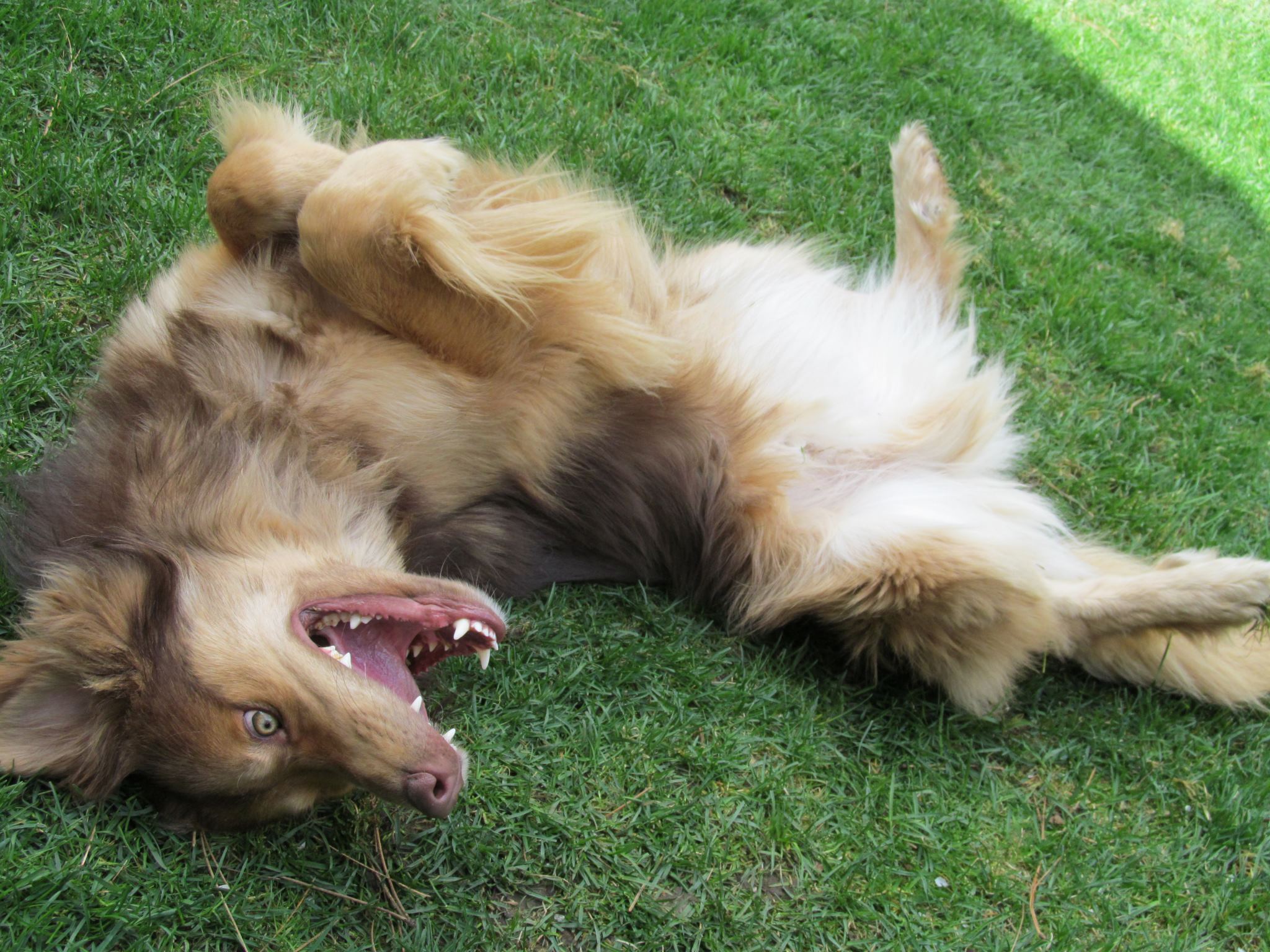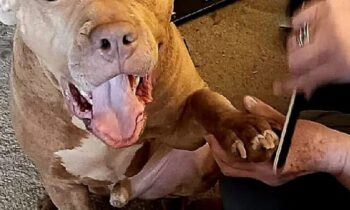

Since my dog was diagnosed in late April with Canine Cognitive Dysfunction, or dog dementia, I’ve gotten a variety of questions from friends in person and online about what typical symptoms he’s displaying and how I’m dealing with the issues raised by these “new” behaviors in our lives.
I’ve read a lot of descriptions from guardians of dogs with dog dementia and I’m keeping my mind as open as possible to the likelihood that my dog might eventually display “typical” behaviors that I haven’t seen yet. I want to be mentally prepared for change and emotionally ready to accept it.
He may not behave “typically,” but he certainly displays some common behaviors.
He’s never stood on the wrong side of a door, not that I’ve seen. But I must say that, in our home, very few doors are ever left closed, and doors left ajar are blocked with a baby gate. Doors that are always closed are for closets, and he’s not a dog who’s ever been in a closet, not here.
He does point his head into the only corner on every landing of our stairs. But he doesn’t get “stuck” there; he gets turned to the “up” direction and then continues up the stairs, even if he’s on his own. If I am with him, which is frequently, I use a full-arm hand signal with a sweeping movement, to interrupt his line of sight, toward the next set of stairs to the second floor, and I usually say, “Up!” Although that’s not a cue for a specific behavior I’ve taught him formally, he seems to understand.
One typical symptomatic behavior in which he does engage and which I find most annoying? Circling. Circling, circling, circling, almost spinning, in the process of lying down. On the bed, if I am also on the bed myself, it’s impossible to ignore, whether I’m sleeping or awake—it’s just so physically disruptive. It makes me want to scream. I have screamed and it didn’t help. I felt guilty and ashamed.
My dog very simply cannot help doing what he’s doing. I am certain he would stop if he could.
Instead, when I am in a better mental state, I say quietly and kindly, “Lie down.” I’ll say it once, maybe another time after too many more circles. It’s not a command, it’s not a formal cue, it’s a phrase, a sound, that he seems to understand. It helps. Not every time, mind you, but I don’t hold it against him—again, this behavior is not his choice. He is not able to choose: it happens to him.

Photo by Val Hughes
Eating became an issue when he went “off his feed” within the first month after his diagnosis. His “regular” had been soaked kibble for the last three years, a high-quality food recommended by our vet. My dog had never been picky! He would probably eat anything. I knew good nutrition was mandatory and I had to get his meds into him every day, in food that he would take easily, eagerly!
I tried everything I could think of and, at first, various “additions” to what had been his regular kibble worked … for a while. He turned out to have an uncanny ability to pick out the “additions” he was no longer willing to eat. (How did he do that?) He would leave the Cosequin tablets—which he’d been eating in his meals every day for three years—in the bottom of his bowl. Same with, shockingly, hamburger I cooked for him daily! I was not only very worried, I was demoralized.
I remembered what had worked for my golden retriever when his kidneys were wearing out: canned food. The golden had never eaten canned food in his life and it turned out he liked it very much, enough to make it much easier to keep him fed—with, eventually, a spoon. (He was a golden, after all. Being a good eater was in his blood.)
So why not? I bought six cans of the same food I’d fed my dog in the kibble format. The first meal, he stuck his head in the bowl and didn’t raise his muzzle until the bowl was clean. Then he came back three times—I counted—to check the bowl again! I was so happy. We’re weeks into the canned-food eating now and I still don’t know why he changed his mind about his regular kibble, even with the additions. At this point, my guess is that it might be a matter of texture and presentation.
He eats the canned food eagerly if I present it properly (for that moment), it seems.
What’s working currently is by the spoonful, one at a time, slopped into his bowl. He eats that, cleaning the bowl thoroughly, then I ask if he wants more. He indicates positively, I slop another spoonful into the bowl. I like this method because it means no more food wasted, food I have to throw away—I hate having to throw food away. I refrigerate the rest of the can until the next meal.
Keep in mind that my dog is, as always, very enthusiastic about eating treats and human food! And, as of now, he is still happy to take his medications hidden in pieces of various foods, thank goodness!
Next?
We’ll see!
For more information about Canine Cognitive Dysfunction:
https://dogdementia.com/



